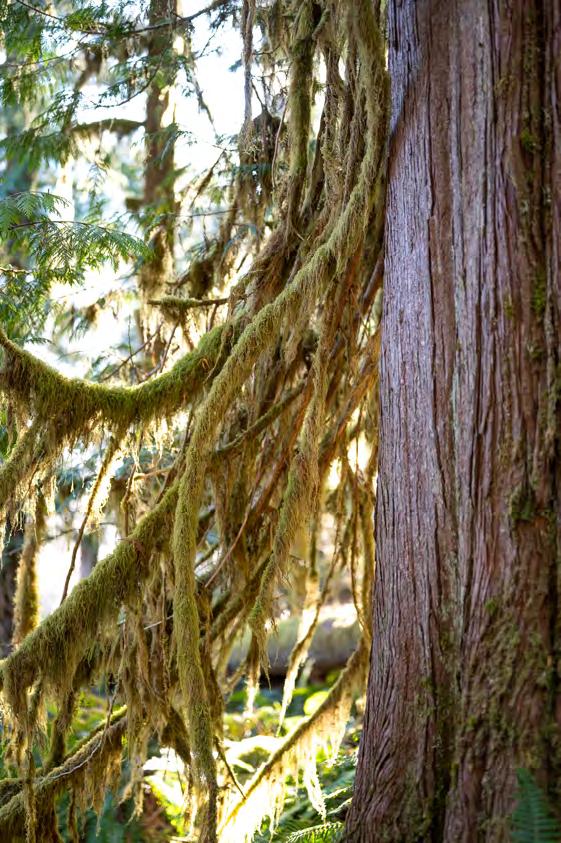
2 minute read
Old Growth Cultures and New Arboreal Discoveries
“If we are looking for models of self-sustaining communities, we need look no further than an old-growth forest. Or the old-growth cultures they raised in symbiosis with them.” Kimmerer’s Braiding chapter “Old-Growth Children,” set in the Sweetgrass coastal rainforests of the Pacific Northwest, depicts Kimmerer’s gift for paralleling ecosystem cultures to human cultures.
She walks the reader through the ways Indigenous people of the Pacific Northwest utilized and shared the resources of the land, explaining how both people and planet profited, not with money but generosity.
Advertisement
“This is the land of the tree of ample hips and full baskets, the one known in the Salish languages as Maker of Rich Women, as Mother Cedar. No matter what the people needed, the cedar was ready to give, from cradle board to coffin, holding the people.” Indigenous peoples of this time didn’t read the internet or science textbooks to understand the forests’ delicate balance. They read the forest. Through their own observations they knew which trees best served which human purpose,and which human actions best served the trees.
Gathering their resources was a ritualistic endeavor. The women sang while walking down their familiar trails to respectfully ask for what they needed and give thanks, prayers and offerings to the earth for what they took. Harvesting a respectful amount of bark from trees was sometimes all they needed. Their incentive was directly related to maintaining the rich ecosystem that supported them. “Wealth meant having enough to give away, social status elevated by generosity. The cedars taught how to share wealth, and the people learned.” This mindset, conveyed through their language, was expressed in their actions, resulting in their harmonious relationship with their intertwined ecosystem. “Today, when the cedar is mistaken for a commodity from the lumberyard, the idea of gift is almost lost. What can we who recognize the debt possibly give back?” Kimmerer asks.
Environmental activist and writer Aldo Leopold held mutual beliefs about the Wisconsin prairie marshland he lived on. Leopold writes, “We abuse land because we regard it as a commodity belonging to us. When we see land as a community to which we belong, we may begin to use it with love and respect.” Leopold 9 was of European descent, and while he and Kimmerer come from different cultural starting points they arrived at the same key teaching—humans’ emotional relationships with land matters.
Kimmerer gives agency to trees as teachers, reminding the reader that every culture stems from the earth. “We may not have wings or leaves, but we humans do have words. Language is our gift and our responsibility.” As the trees helped to give humans language, we must use our language to give back to them.

“Clicks and chatter disturb the cathedral hush. The air is so twilight-green she feels like she’s underwater. It rains particles—spore clouds, broken webs and mammal dander, skeletonized mites, bits of insect frass and bird feather. . . . Everything climbs over everything else, fighting for scraps of light. If she holds still too long, vines will overrun her.” —The Overstory











